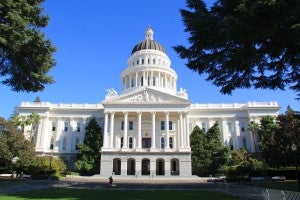By Mark Brownstein and Steve Hamburg
An organization in North Carolina this week asked the U.S. Environmental Protection Agency to examine questions about the accuracy of measurements from a device used in two of the large and growing list of studies published in recent years quantifying the enormous amounts of methane released into the atmosphere by the U.S. oil and gas industry each year.
That long list of studies is a major reason why EPA recently increased its official estimates of industry emissions by 34 percent, and why the agency is pursuing new rules to start fixing the problem. In fact oil and gas methane emissions have moved from obscurity to center stage with remarkable speed, thanks to rush of compelling data.
The particular papers at issue were written by a team of scientists led by Dr. David Allen of the University of Texas. They are among of a group of studies on oil and gas industry methane emissions organized and coordinated by EDF. Possible complications involving a piece of sampling equipment (among several that were used) have been discussed by researchers in both academic literature and the news media for more than a year. You can read the blog that EDF wrote on it back in 2015 here. Read More










 The natural gas industry group Our Nation’s Energy (ONE) Future Coalition released
The natural gas industry group Our Nation’s Energy (ONE) Future Coalition released  Throughout the United States, utilities earn a profit through a tried and true regulatory model that has worked well for over 100 years. This model was built on the assumption that customers would use ever increasing amounts of electricity, and it worked for some time. But, as the need to save power and make electric systems more efficient becomes essential to adapt to climate change, this and other assumptions no longer hold true. Without changing how utilities are compensated, we run the risk of experiencing a true irony: utilities, the cradles from which our modern civilization rose, may become the chains preventing us from advancing toward a clean energy future.
Throughout the United States, utilities earn a profit through a tried and true regulatory model that has worked well for over 100 years. This model was built on the assumption that customers would use ever increasing amounts of electricity, and it worked for some time. But, as the need to save power and make electric systems more efficient becomes essential to adapt to climate change, this and other assumptions no longer hold true. Without changing how utilities are compensated, we run the risk of experiencing a true irony: utilities, the cradles from which our modern civilization rose, may become the chains preventing us from advancing toward a clean energy future. We know we need massive decreases in greenhouse gas emissions by 2050 if
We know we need massive decreases in greenhouse gas emissions by 2050 if 
 As the days are getting longer and the weather is warming up, kids across the country are counting down the days until summer vacation. California state lawmakers, on the other hand, are rolling up their sleeves and building upon California’s strong foundation of clean energy leadership and momentum. With the electricity sector responsible for
As the days are getting longer and the weather is warming up, kids across the country are counting down the days until summer vacation. California state lawmakers, on the other hand, are rolling up their sleeves and building upon California’s strong foundation of clean energy leadership and momentum. With the electricity sector responsible for